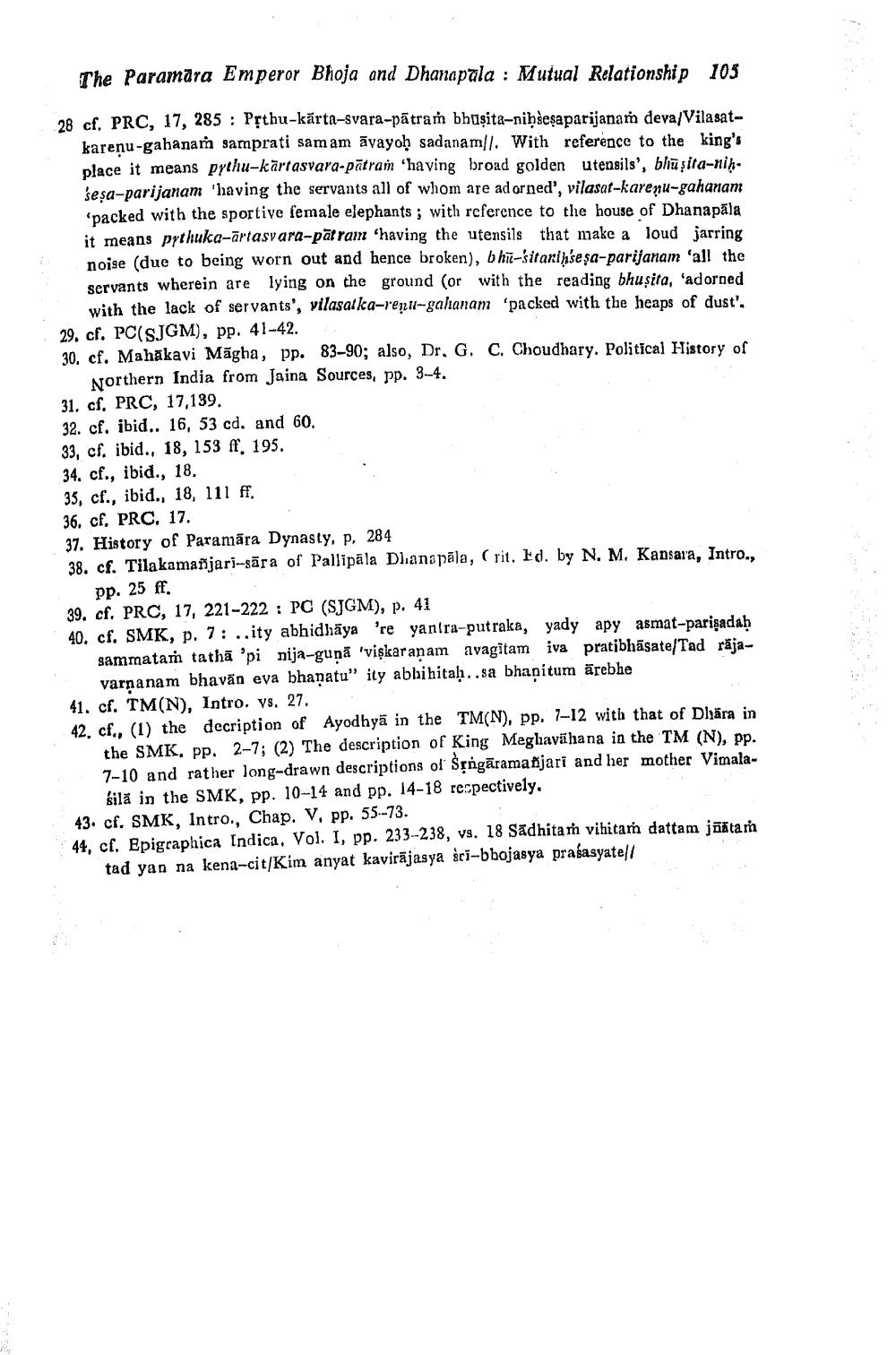________________
The Paramara Emperor Bhoja and Dhanapala : Mutual Relationship
105
28 cf. PRC, 17, 285 : Ppthu-kārta-svara-pātram bhuşita-nihsesaparijanam deva/Vilasat
karenu-gahanam samprati sam am āvayoḥ sadanaml. With reference to the king's place it means pythu-kārtasvara-pătram 'having broad golden utensils', bluşita-nih. sesa-parijanam 'having the servants all of whom are adorned', vilasar-karenu-gahanam 'packed with the sportive female elephants ; with reference to the house of Dhanapāla it means pythuka-ārtasvara-patram 'having the utensils that make a loud jarring noise (due to being worn out and hence broken), bhi-sitariseşa-parijanam 'all the servants wherein are lying on the ground (or with the reading bhusita, 'adorned
with the lack of servants', vilasatka-reril-gahanam 'packed with the heaps of dust'. 29. cf. PC(SJGM), pp. 41-42. 30. cf. Mahakavi Māgha, pp. 83-90; also, Dr. G. C. Choudhary. Political History of
Northern India from Jaina Sources, pp. 3-4. 31, cf, PRC, 17,139. 32. cf. ibid.. 16, 53 cd, and 60. 33, cf. ibid., 18, 153 ff. 195. 34. cf., ibid., 18. 35, cf., ibid., 18, 111 ff. 36. cf. PRC. 17. 37. History of Paranára Dynasty, p. 284 38. cf. Tila kamañjari-gāra of Pallipala Dhanapāla, (rit. Ed. by N. M. Kansara, Intro.,
pp. 25 ff. 39. cf. PRC, 17, 221-222 : PC (SJGM), p. 41 40. cf. SMK, p. 7: ..ity abhidhäya 're yantra-putraka, yady apy asmat-parişadah
sammatam tathā 'pi nija-gunā 'vişkar anam avagitam iva pratibhāsate/Tad rāja
varnanam bhavān eva bhanatu" ity ablihitah..sa bhanitum ärebhe 41. cf. TM(N), Intro. vs. 27. 42. cf., (1) the decription of Ayodhya in the TM(N), pp. 7-12 with that of Dhāra in
the SMK, pp. 2-7; (2) The description of King Megliavāhana in the TM (N), pp. 7-10 and rather long-drawn descriptions of Srngāramañjari and her mother Vimala
bilă in the SMK, pp. 10-14 and pp. 14-18 recpectively. 43. cf. SMK, Intro., Chap. V, pp. 55--73. 44, cf. Epigraphica Indica, Vol. I, pp. 233--238, vs. 18 Sadhitam vihitam dattam pitam
tad yan na kena-cit/Kim anyat kavirājasya sri-bbojasya praśasyatell
c. 17. 221-222 : PO
o re yantra-putraka, yady watibhāsate/Tad rāja




